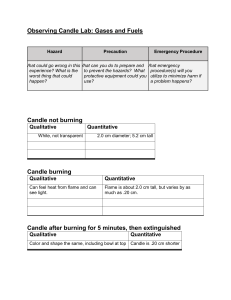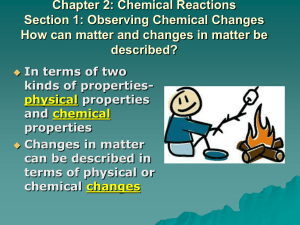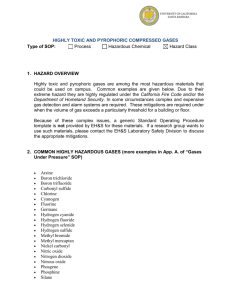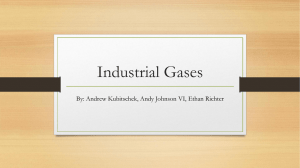5. Physical and Chemical Change
advertisement
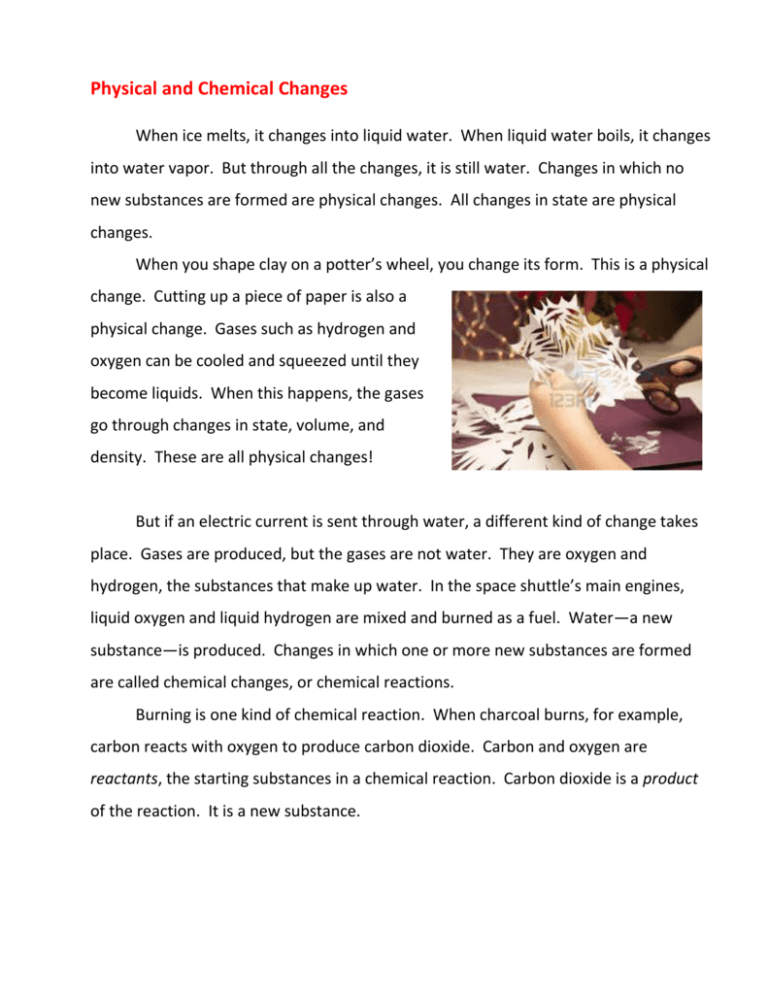
Physical and Chemical Changes When ice melts, it changes into liquid water. When liquid water boils, it changes into water vapor. But through all the changes, it is still water. Changes in which no new substances are formed are physical changes. All changes in state are physical changes. When you shape clay on a potter’s wheel, you change its form. This is a physical change. Cutting up a piece of paper is also a physical change. Gases such as hydrogen and oxygen can be cooled and squeezed until they become liquids. When this happens, the gases go through changes in state, volume, and density. These are all physical changes! But if an electric current is sent through water, a different kind of change takes place. Gases are produced, but the gases are not water. They are oxygen and hydrogen, the substances that make up water. In the space shuttle’s main engines, liquid oxygen and liquid hydrogen are mixed and burned as a fuel. Water—a new substance—is produced. Changes in which one or more new substances are formed are called chemical changes, or chemical reactions. Burning is one kind of chemical reaction. When charcoal burns, for example, carbon reacts with oxygen to produce carbon dioxide. Carbon and oxygen are reactants, the starting substances in a chemical reaction. Carbon dioxide is a product of the reaction. It is a new substance. ↑A marshmallow melting is an example of a physical change. A marshmallow burning is an example of a chemical change. There are some clues that can help you identify chemical reactions. They include an unexpected change in color or the production of light, heat, or a gas. Paper turns black as it burns, for example. When baking soda is mixed with vinegar, it bubbles. This shows that carbon dioxide has been produced. A candle produces heat and light as it burns. ←A candle melting is a physical change. A candle burning (the flame) is a chemical change. However, it’s sometimes hard to tell the difference between a physical change and a chemical reaction. Cherry-flavored drink powder is pale pink. When you mix it with water, it turns bright red. But the powder has only dissolved. It has gone through a physical change, not a chemical reaction. When you open a cold soft drink, bubbles are produced. But a chemical reaction has not taken place. The carbon dioxide has simply come out of solution. And if you rub your hands quickly back and forth across a surface, they become hot. But the heat is due to friction, not a chemical reaction. √ What is the difference between a physical change and a chemical reaction? √ Name the characteristics of a chemical reaction.


